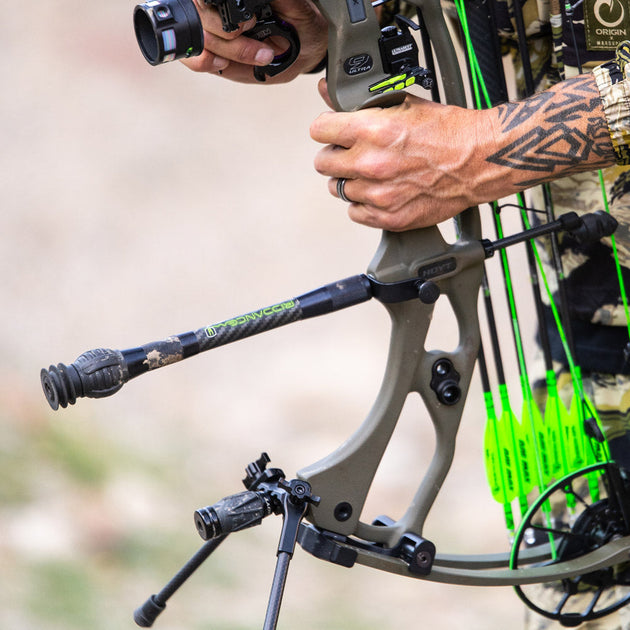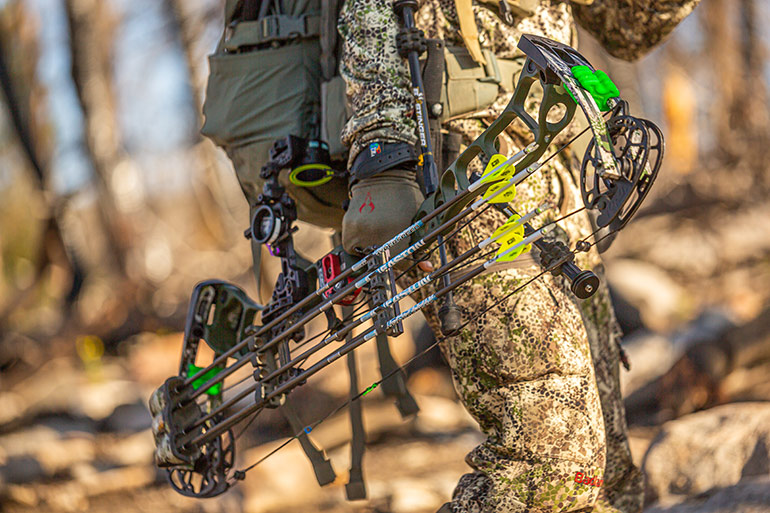Boost Your Accuracy: The Duty of Archery Stabilizers
Boost Your Accuracy: The Duty of Archery Stabilizers
Blog Article
The Ultimate Guide to Selecting the Right Archery Stabilizer for Enhanced Accuracy
Archery is a sporting activity that demands accuracy and accuracy, and selecting the best tools is critical for accomplishing optimal outcomes. Amongst the various devices offered, an archery stabilizer plays a considerable duty in enhancing accuracy. With so several choices on the market, it can be frustrating to establish which stabilizer is the appropriate fit for your needs. In this extensive overview, we will check out the crucial variables to consider when selecting an archery stabilizer for improved accuracy. From finding the ideal size to recognizing the various layouts and products, we will explore whatever you require to recognize to make an educated choice. So, whether you are a skilled archer wanting to upgrade your devices or a novice seeking assistance, join us on this journey as we untangle the secrets to picking the perfect archery stabilizer.
Length: Finding the Optimum Stabilizer Length
When picking an archery stabilizer for ideal performance,Figuring out the optimal stabilizer length is vital. The size of a stabilizer straight affects the equilibrium, stability, and precision of the bow. A stabilizer that is too long can make the bow really feel top-heavy and hard to regulate, while a stabilizer that is as well brief might not provide adequate stability and dampening of resonances. Finding the appropriate length needs thinking about factors such as the archer's shooting design, bow weight, and individual preference.
A longer stabilizer, usually varying from 8 to 12 inches, can provide higher security and lower bow torque. This is especially beneficial for archers who fire with a high draw weight or those that have a tendency to torque the bow during the shot. The added length assists to disperse the weight equally and counterbalance any torque or motion.
On the various other hand, a shorter stabilizer, normally in between 4 to 7 inches, offers much more ability to move and quicker feedback. It is favored by archers who fire with a reduced draw weight or those who call for even more movement, such as hunters or 3D shooters. The shorter length enables less complicated activity via tight spaces and faster adjustments.
Inevitably, the optimal stabilizer length is a matter of personal choice and shooting design. It is recommended to explore various sizes and observe the impacts on security and accuracy. Consulting with seasoned archers or professionals can also offer important insights and recommendations.
Weight: Figuring Out the Appropriate Stabilizer Weight
After thinking about the ideal stabilizer length, the next important aspect to think about when picking an archery stabilizer is identifying the suitable stabilizer weight - archery stabilizer. The weight of the stabilizer plays a critical duty in improving accuracy and stability throughout the shot
The weight of the stabilizer affects the balance and control of the bow. A larger stabilizer can give enhanced stability and control, especially for shooters with a propensity for irregular shots or shaky hands. It aids to soak up the vibrations and recoil generated by the bow, decreasing torque and reducing the effect on the arrowhead's flight.
On the various other hand, a lighter stabilizer enables a quicker and much more receptive bow. It can be beneficial for shooters that focus on maneuverability and rate over stability. Lighter stabilizers additionally reduce exhaustion throughout long shooting sessions or competitors.
To identify the ideal stabilizer weight for your requirements, it is essential to consider your shooting design, physical stamina, and bow arrangement. Try out different weights and observing the influence on your capturing performance is key to discovering the ideal equilibrium.
Eventually, the optimal stabilizer weight will differ for each and every specific archer. It is advised to begin with a modest weight and make modifications based upon personal preference and capturing results. Keep in mind, the goal is to accomplish a secure and regulated shot, while likewise keeping comfort and simplicity of usage.
Materials: Selecting the Right Products for Toughness and Efficiency
When choosing an archery stabilizer, it is crucial to carefully think about the products used in its building to make sure durability and enhance efficiency. The selection of materials can significantly influence the general quality and effectiveness of the stabilizer.
One of the most frequently utilized products for stabilizers is carbon fiber. Additionally, carbon fiber stabilizers are resistant to temperature changes and are less likely to warp or bend over time.
Another prominent product for stabilizers is light weight aluminum. Light weight aluminum stabilizers are recognized for their resilience and rigidity. They offer superb wetting capacities, minimizing the quantity of shock and vibration transferred to the shooter's hand. Light weight aluminum stabilizers also offer a large range of customization alternatives, permitting archers to readjust the weight and size to top article fit their preferences.
Some stabilizers are created utilizing a combination of products. For instance, a stabilizer might have a carbon fiber core covered in an aluminum covering. This crossbreed style combines the ideal high qualities of both materials, giving ideal stability, durability, and efficiency.
Style: Understanding the Various Stabilizer Designs and Their Results
Thinking about the products used in archery stabilizers, it is very important to now explore the various designs of stabilizers and their particular effects. The style of an archery stabilizer plays an important role in improving precision and minimizing resonance during the shot. There are a number of various designs readily available on the market, each with its very own special qualities.

Another popular layout is the side bar stabilizer. This design involves affixing a brief rod to the side of the bow, parallel to the primary lengthy pole. discover this Side bar stabilizers assist in counteracting the weight of devices, such as views or quivers, and supply extra stability to the bow.
Some stabilizers include adjustable weights. These stabilizers enable archers to tweak the equilibrium and feel of their bows by including or eliminating weights. This function is particularly valuable for archers that like a particular weight distribution or intend to try out different setups.
Moreover, some stabilizers include wetting modern technology to decrease resonance and noise. These stabilizers commonly have integrated dampeners or use materials that take in resonances, leading to a smoother and quieter shot.

Devices: Discovering Extra Devices for Improved Stability
To additionally improve security in archery, extra devices can be used. These devices are designed to work in conjunction with the archery stabilizer to provide an also higher degree of stability and accuracy. One such accessory is the V-bar or the side stabilizer install. This device enables the accessory of a 2nd stabilizer, which assists to stabilize the bow and minimize torque. By dispersing the weight equally on both sides of the bow, the V-bar helps to minimize any type of undesirable activity throughout the shot.
One more accessory that can improve stability is a bow sling. A bow sling is a band that connects to the bow and enables the archer to maintain a kicked back grasp on the bow deal with without the fear of dropping it (archery stabilizer). This relaxed grasp assists to decrease muscular tissue tension and permits a more secure and regular shot
Additionally, a stabilizer weight system can be made use of to make improvements the equilibrium navigate to this website and security of the bow. These weight systems generally include tiny weights that can be added or gotten rid of from the stabilizer to adjust the balance point of the bow. By discovering the optimum equilibrium factor, archers can accomplish a much more precise and steady shot.
Final Thought
In verdict, picking the ideal archery stabilizer includes taking into consideration variables such as length, weight, products, design, and added accessories. The ideal stabilizer size and weight will depend on private preferences and shooting design.
Figuring out the perfect stabilizer length is important when picking an archery stabilizer for optimum efficiency. A stabilizer that is also long can make the bow really feel top-heavy and challenging to regulate, while a stabilizer that is too short may not supply adequate stability and dampening of resonances - archery stabilizer.Taking into account the materials used in archery stabilizers, it is crucial to now delve into the different styles of stabilizers and their respective impacts. Side bar stabilizers assist in counterbalancing the weight of accessories, such as quivers or sights, and provide added security to the bow
These weight systems generally consist of tiny weights that can be included or eliminated from the stabilizer to change the equilibrium point of the bow.
Report this page